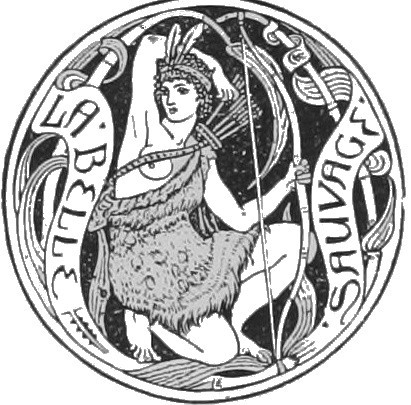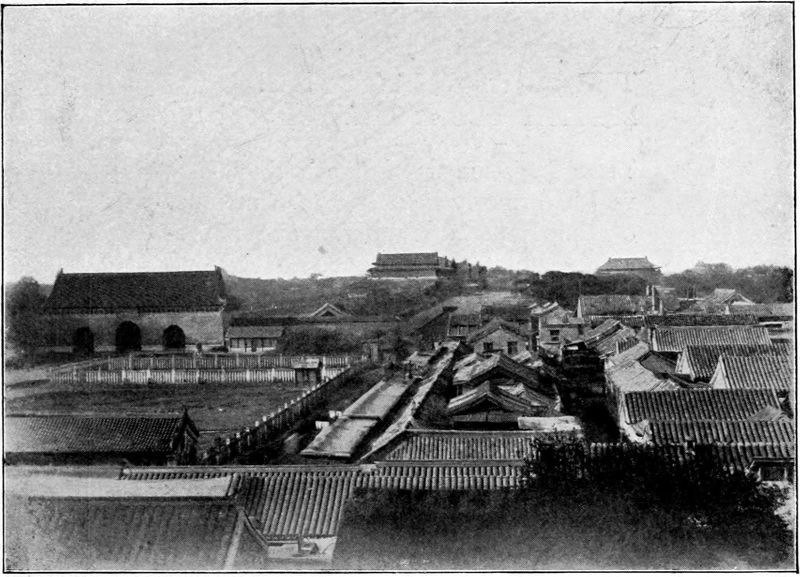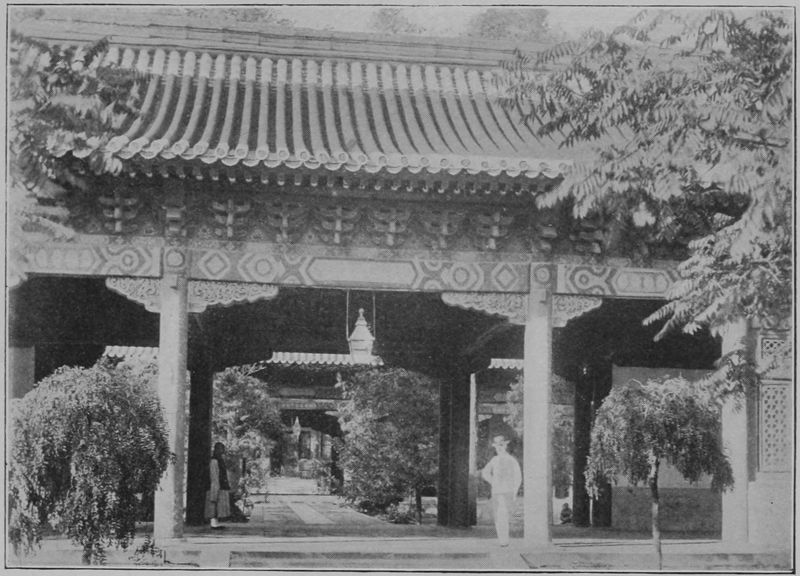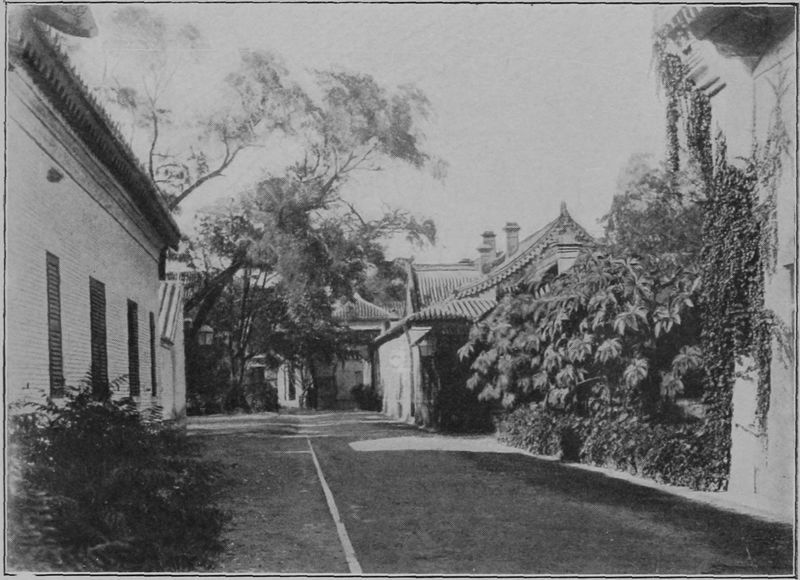Chinese Pictures: Notes on Photographs Made in China
Isabella L. Bird
the tb
CHINESE PICTURES

INTRODUCTION.
This little book is the outcome of talks with Mrs. Bishop over some of the photographs which were taken by her in one or other of her journeys into and across China. Some of the photographs have already appeared in her published works, “The Yangtze Valley and Beyond” and “Korea and Her Neighbourhood” (2 vols., Murray). The notes were, in substance, dictated by Mrs. Bishop. It is hoped they contain some real information on the people, their surroundings, and habits which, though slight in form, may be helpful to a better understanding of a very difficult problem.
According to our newspaper press to-day, the Chinese are simply cruel barbarians. According to Mrs. Bishop, when you know them they are a likeable people—and she has formed this opinion in spite of the fact that, in their deeply-rooted hatred of the foreigners, they twice attacked her with violence. A real understanding of the people is for us, with our different modes of thought, most difficult to arrive at; but we shall not advance towards it by accepting all the evil reports and shutting our ears to the good ones. That the problem of China is, and will for some time continue to be, the most interesting question to the rest of the world is certain. The future of its people is all unknown, but there are in it possibilities which make it a terror to all other nations.
ERRATA.
The illustrations on p. 79 and p. 81 have been transposed. The former represents “The Tablet of Confucius,” the latter, “The Altar of Heaven.”
Chinese Pictures.
[Transcriber’s Note: this error has been corrected.]
CONTENTS.
| PAGE | |
| The Private Entrance to the Imperial Palace, Peking | 8 |
| The Entrance to the British Legation | 10 |
| Entrance to the College of the Student Interpreters | 12 |
| The State Carriage of the British Legation | 14 |
| The Great Imperial Stone Road from Peking to Chengtu, the Capital of Sze Chuan | 16 |
| A Mule Cart | 18 |
| A Manchurian Family Travelling | 20 |
| Carriage by Bearers | 22 |
| A Traveller Arriving at an Inn in Manchuria | 24 |
| Carriage of Merchandise | 26 |
| The Mode of Carrying Oil and Wine | 28 |
| Wheelbarrow Traffic on the Chengtu Plain | 30 |
| The Wheelbarrow of North China | 32 |
| A Small Houseboat on the Yangtze Kiang | 34 |
| A Foot Boat Found in Central China | 36 |
| Hsin Tan Rapid on the Yangtze River | 38 |
| A Boat on the Min River, Used for Running the Rapids | 40 |
| Part of a Fringe of Junks or River Boats at Wan Hsien | 42 |
| The Bridge of Ten Thousand Ages, Foochow | 44 |
| A Bridge at Wan Hsien of the Single Arch Type | 46 |
| The Bridge of Mien Chuh Sze Chuan | 48 |
| A Simple Country Bridge | 50 |
| A Dragon Bridge | 52 |
| The Zig-zag Bridge of Shanghai | 54 |
| The Garden of the Guild of Benevolence, Chung King | 56 |
| A Burial Charity | 58 |
| A Baby Tower, Foochow | 60 |
| Bottle Seller and Hospital Patient | 62 |
| The Dying Coolie | 64 |
| The Mode of Sepulchre throughout Southern China | 66 |
| Coffins Kept Above Ground | 68 |
| The Temple of the God of Literature at Mukden | 70 |
| The Temple of the Fox, Mukden | 72 |
| Wayside Shrines | 74 |
| The Ficus Religiosa | 76 |
| The Altar of Heaven | 78 |
| The Tablet of Confucius | 80 |
| A Porcelain-fronted Temple on the Yangtze | 82 |
| Child Eating Rice with Chopsticks | 84 |
| Fort on the Peking Wall | 86 |
| Another Fort on the Wall of Peking | 88 |
| Colossal Astronomical Instruments on the Peking Wall | 90 |
| Chien Mun Gate | 92 |
| The Gate of Victory, Mukden | 94 |
| The West Gate of Kialing Fu | 96 |
| The West Gate of Hangchow | 98 |
| The Gate of a Forbidden City | 100 |
| Silk Reeling | 102 |
| A Typical Entrance to a House | 104 |
| The Guest Hall in a Chinese House, Wan Hsien, Sze Chuan | 106 |
| A Chinese Village | 108 |
| A Farmhouse in the Hakka Country, Southern China | 110 |
| A Market Place or Market Street in Sze Chuan | 112 |
| The Cobbler | 114 |
| Carrying Liquid Manure to the Fields | 116 |
| The Marriage Chair | 118 |
| Mode of Carrying Cash and Babies | 120 |
| A Pai-fang, or Widow’s Arch | 122 |
| Two Soldiers of Sze Chuan | 124 |
| Opium Culture Encroaching on the Rice Lands, Sze Chuan | 126 |
THE PRIVATE ENTRANCE
TO THE
IMPERIAL PALACE, PEKING.
A subject of considerable interest, owing to the mystery surrounding the members of the Imperial Family. The photograph was taken from the wall of the Purple or Forbidden City, in which only the Imperial Family and their entourage have the right to dwell. The building in the centre, which is roofed with yellow tiles, is supposed to be the residence of the Emperor, but where he does actually reside remains a mystery. The entrance to the Palace is through the arches in the building on the left.

THE PRIVATE ENTRANCE
TO THE
IMPERIAL PALACE, PEKING
THE ENTRANCE TO THE
BRITISH LEGATION.
The Legation is a fine old palace, which formerly belonged to a member of the Imperial Family. The photograph shows the entrance to the first courtyard. The Legation compound is very extensive, and contains several courtyards with buildings round each. It is very highly decorated, the designs shown in this picture being elaborately wrought in lacquered work of gold and colours. This is the building recently attacked by the Chinese in their attempt to destroy all foreigners, including the members of the various European Legations who took refuge with Sir Claude Macdonald.

THE ENTRANCE TO THE
BRITISH LEGATION
ENTRANCE TO THE COLLEGE
OF THE
STUDENT INTERPRETERS.
Student interpreters are young Englishmen who enter the College to prepare themselves for the Consular Service. At eighteen they have to pass their entrance examination. They receive given posts in connection with one of the various Chinese Consulates. All our Chinese Consuls are drawn from this College. It stands within the grounds of the Legation, which is the building shown on the right of the picture.

ENTRANCE TO THE COLLEGE
OF THE
STUDENT INTERPRETERS
THE STATE CARRIAGE
OF THE
BRITISH LEGATION.
There are practically no carriage roads in China, so that there is virtually no carriage traffic. This rough, springless cart is the only carriage drawn by animals at the disposal of the Legation.